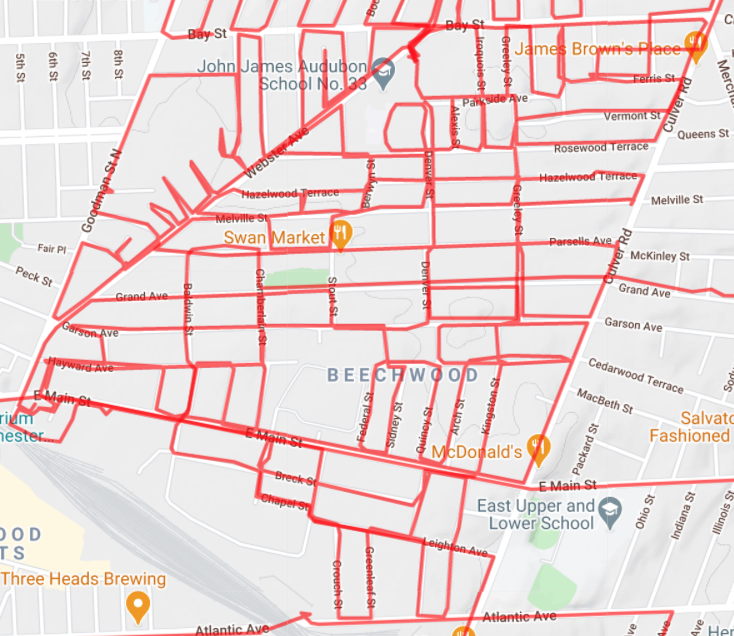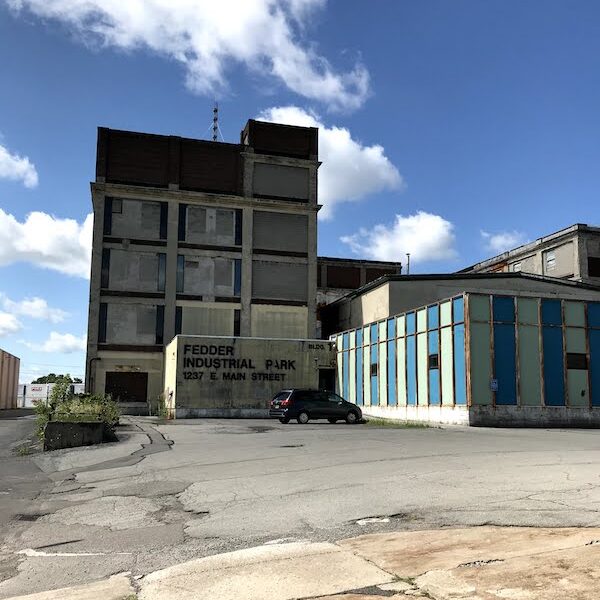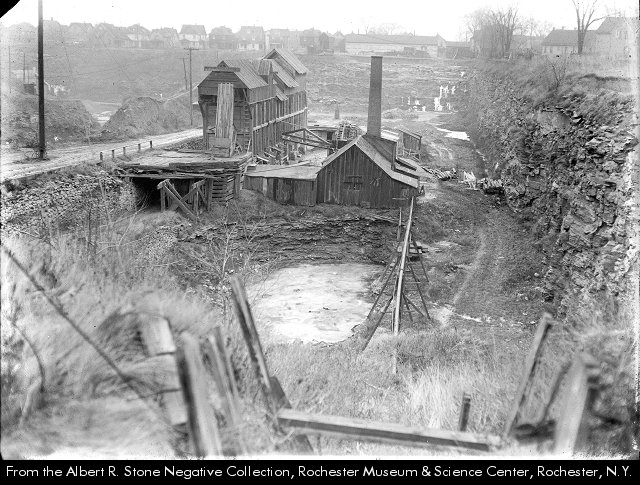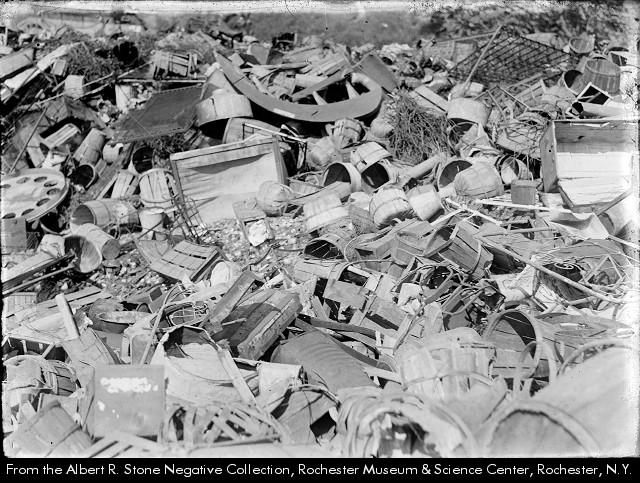A love letter to Beechwood

Year Incorporated: 1874
Ward: 18
Population: 8523[/su_box]
Let me start by saying I’ve been looking forward to riding and writing about Beechwood. Here is a strong contender for my favorite neighborhood in all of Rochester. It’s not just the rich history, or the diversity, or the central location that I love. Both sides of my family settled in Beechwood when they came to Rochester (or America, in one case); one family on Bay St, the other on Herkimer. I spent a good chunk of my first 10 years in Beechwood, running amok in and around my grandmother’s house. In many ways this area feels like home in the same ways it did in the ’80s. Many years later I went on to open a business here, and relocated another to the Hungerford building. Yeah, I have a lot of love for Beechwood.
[Note: I refer to this entire area as Beechwood, but the portion south of Main St. is often referred to as EMMA – East Main Mustard Atlantic. I’ve also heard East Main Merchants Association. I’m focusing this blog on the historic place names more than anything, and EMMA was largely contrived in the 21st century. Similar to Browncroft and North Winton, there is much overlap between the two areas, but there are a few people hard at work at differentiating the two areas, so a shout-out is deserved.]

The area is full of surprises. Behind crumbling facades lie movie theaters, bowling alleys, old taverns and grand churches. Unlike many other neighborhoods, its housing stock is consistently large. You likely won’t find ranches or little shotgun houses here; this area was largely built up in the boom times of the 1920s. Another of my favorite architectural surprises that’s incredibly common here is what I call the Franken-house, or houses that have expanded faster than the code inspectors can keep up. The result is street after street of unique properties. Some of this is by design, and some due to the eclectic tastes of the resident.

Unlike a few of the other areas I’ve profiled so far, Beechwood features multiple commercial hubs. Bay, Goodman, Main, Culver and Parsells all have plazas or storefronts clustered to make for a very walkable urban village. There are quite a few churches, schools, and community agencies in operation. The Thomas P. Ryan R-Center and Sully Library are frequent stops for me, not to mention a handful of playgrounds, parklets and community gardens serving as safe gathering spots.

Oh, the history. This area started out as farmland just outside the city limits. Then in 1874 one of the larger city annexations in Rochester’s history extended the border from Goodman to Culver. East Main Street, formerly Schanck Road, became the main east/west thoroughfare and commercial strip. Still, it took a while for the old farms to subdivide and sprout new homes. Industry had a foothold in the area and was primed to expand quickly. The New York Central railroad had ample space to construct a rail yard (pending removal of a few things.. like a cemetery*). This new freight access made the area a perfect location for Rochester Bridge and Ironworks, Rochester Car Wheel Works, a Beech Nut packing company, a syrup manufacturer, the R.T. French mustard factory, a couple lumber yards, Rochester Fire Works Co, a bulding supply company, John Hofman Store Fixtures Co, and on and on. A bit to the north another railroad served a different purpose. The current RGRTA bus barns used to be the staging yard for the Rochester & Sodus Bay R.R. and later the Rochester Railway Co., i.e. the local trolley service.

*A bit about that cemetery: In 1843 some land near the railroad tracks was gifted to the St. Joseph’s Roman Catholic Church for a cemetery. The Goodman Street Cemetery, as it was known, was in operation for nearly 3 decades before the New York Central made an offer on the land. The majority of bodies were moved by rail and reinterred in Holy Sepulchre Cemetery, also conveniently located next to New York Central tracks. Estimates vary widely on the number of graves, but one researcher has calculated a figure around 3000 total burials. Part of the original cemetery ground is beneath the rail yard, but the original site is listed as that of the Fedder Industrial Complex.
Limestone was a cash cow in the early years of Beechwood. Niagara gray limestone was discovered in the area that is now Goodman Plaza, then known as the Foery Kastner Stone Quarry, or McLaurie Quarry. Stone from this site would be used all over the area, notably in the construction of Brighton Presbyterian Church on East Ave. In an era when zoning was more or less non-existent stone would be removed creating near-vertical cliffs out of property boundaries. In the early ’20s they had reached a depth of nearly 100 feet in some spots. At this depth ground water created ponds that made the quarry much less viable. Then in March of 1920 the body of 3-year-old Edward Maurer was discovered after he had wandered from home. This tragedy helped to galvanize community opinions against the quarry, and so naturally it was abandoned and turned over to the city, which in turn used it as a landfill. This wasn’t the end of tragedies within this parcel; in 1924 a boy, 15, drowned in 15 feet of water while searching the dump for fireworks. In 1930 a 6 year old boy drowned while “rafting” in one of the remaining ponds. Frankly, a summary of search results for “Boy Dies in Quarry” from the Democrat and Chronicle alone would fill page after depressing page. The city, assured that the problem would solve itself as the dump was filled, initially projected that it would reach its maximum capacity around 1935-1940. In reality it took until the late ’60s for the dump to be completely filled, though that didn’t stop the city from selling off parts of it for development. In 1955 eleven acres of the northern portion of the quarry were sold to a developer and three years and $1.5 million later Goodman Plaza celebrated its grand opening. Despite decades as a commercial hub in the community, Rochester has yet to bear the consequences of burying all that trash.

From the Collections of the Rochester Museum & Science Center, Rochester, NY.
About that business that I mentioned starting here. Back in 2011 the old Vietnam Veterans Thrift Store (along with the even older VOA) decided to close their doors. I was heavily involved with the zero waste/building materials reuse movement which had barely gotten a foothold in Rochester but was doing well in Buffalo and Ithaca, and I wanted more than anything to have a reuse center in Rochester. Months later Rochester Greenovation was born, and has been hanging on ever since. I can’t even tell you how many tons of materials have been saved from landfills, but I’m thrilled that it has become a fixture in the neighborhood and another haven for local artists.

Speaking of, Beechwood has embraced the creative spirit of adjacent Neighborhood of the Arts and has become an arts destination in its own right. The aforementioned Greenovation, along with Fedder building and Hungerford, have been a magnet for talent across the city and a regular stop during First Fridays. I could write paragraphs about the talent within Hungerford alone.
What else can I add about Beechwood? It’s been home to a Super Bowl champion, an Olympic gold medalist, and (supposedly) the first business franchiser. It’s been a magnet for immigrants and refugees from many corners of the world. And, I think, it’s the combination of these 2 facts that will drive this area into the future; other neighborhoods may be content with the status quo, but Beechwood is always finding ways to improve things, whether it be for themselves or the community. Along my ride I watched as a crew drilled for a vertical geothermal heating system. This was the first time I’ve seen this done in Rochester, and it certainly won’t be the last time. I love that residents are making big investments like this, both financially and environmentally. It shows that they believe in the long-term value of the area. Sure, there may be challenges ahead; there’s still that unresolved issue of the buried landfill, or the various brownfield sites that dot the area. None of that should detract from Beechwood’s biggest strength: the people who’ve decided to put down roots and live, work or worship here. They see what I see: a neighborhood worth coming back to again and again.



Another great article. Very well written.
I absolutely love these stories and I am particularly intrigued by your style! Mom’s I believe that Rochester has an incredibly unique history. I embrace it now and have since I graduated from the 1985 and settled here!
What wonderful writing! Your appreciation for the Beechwood neighborhood really shines through. It’s amazing to live near a neighborhood but not know some of its history, such as the quarry history you wrote of here. It’s always nice to learn something new about our community!